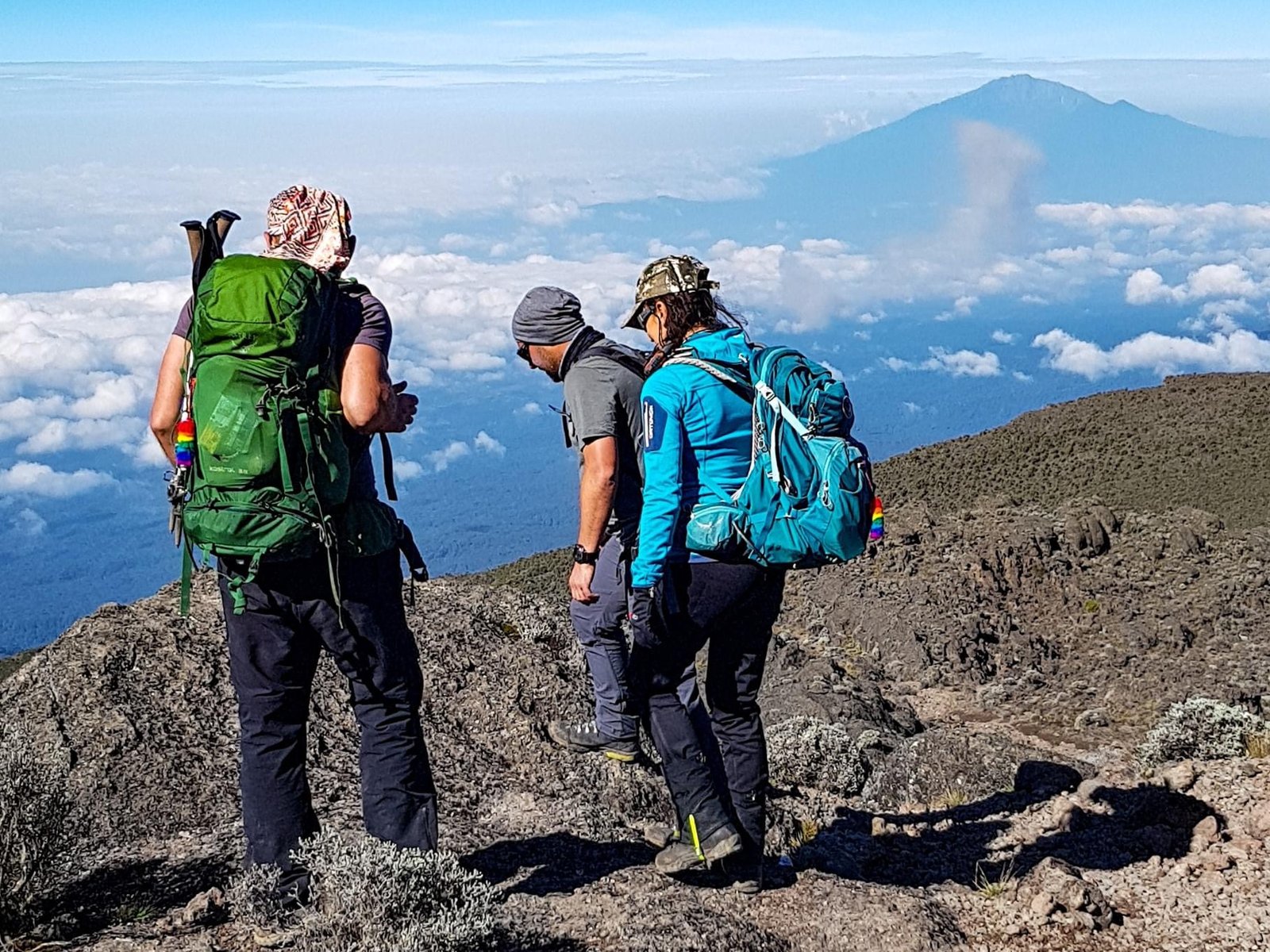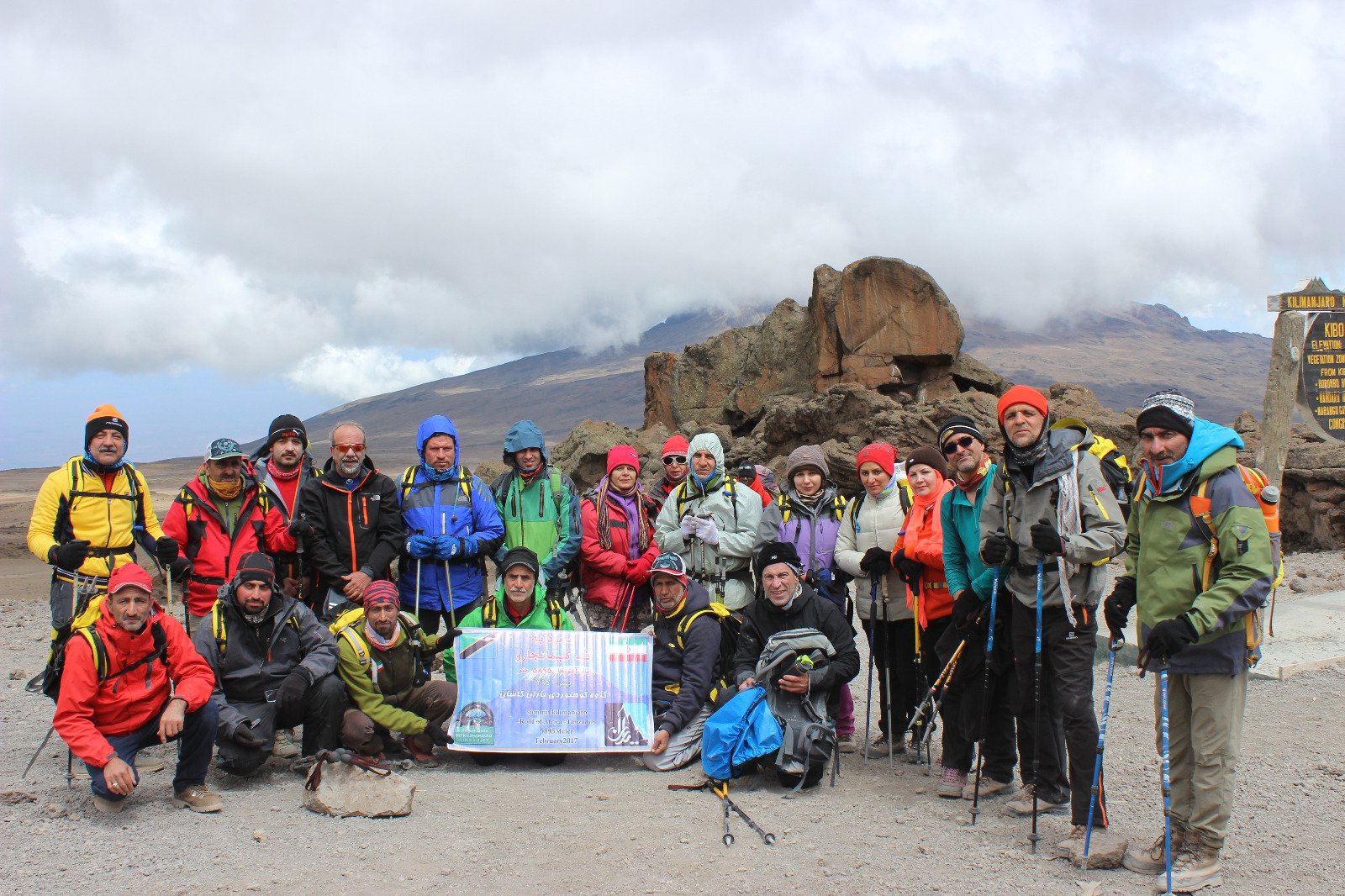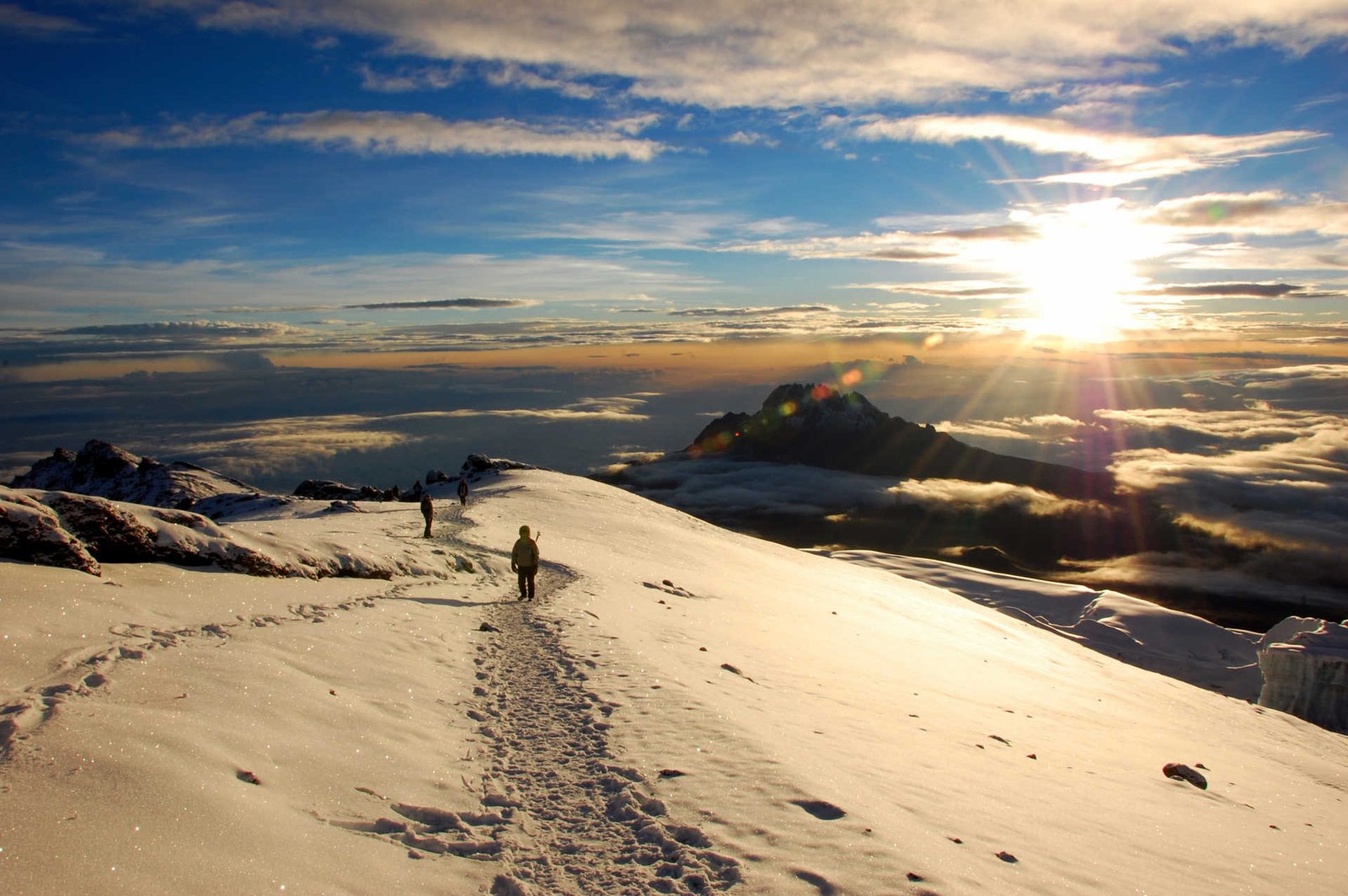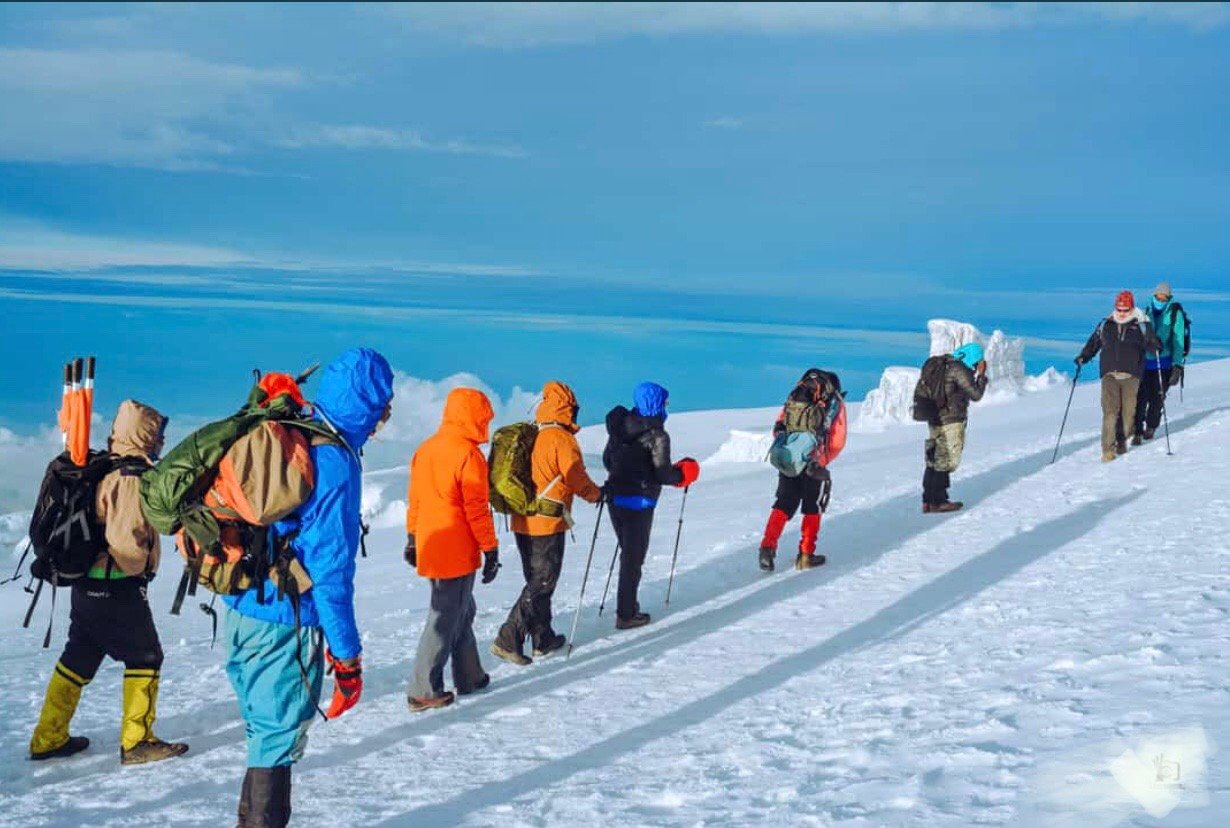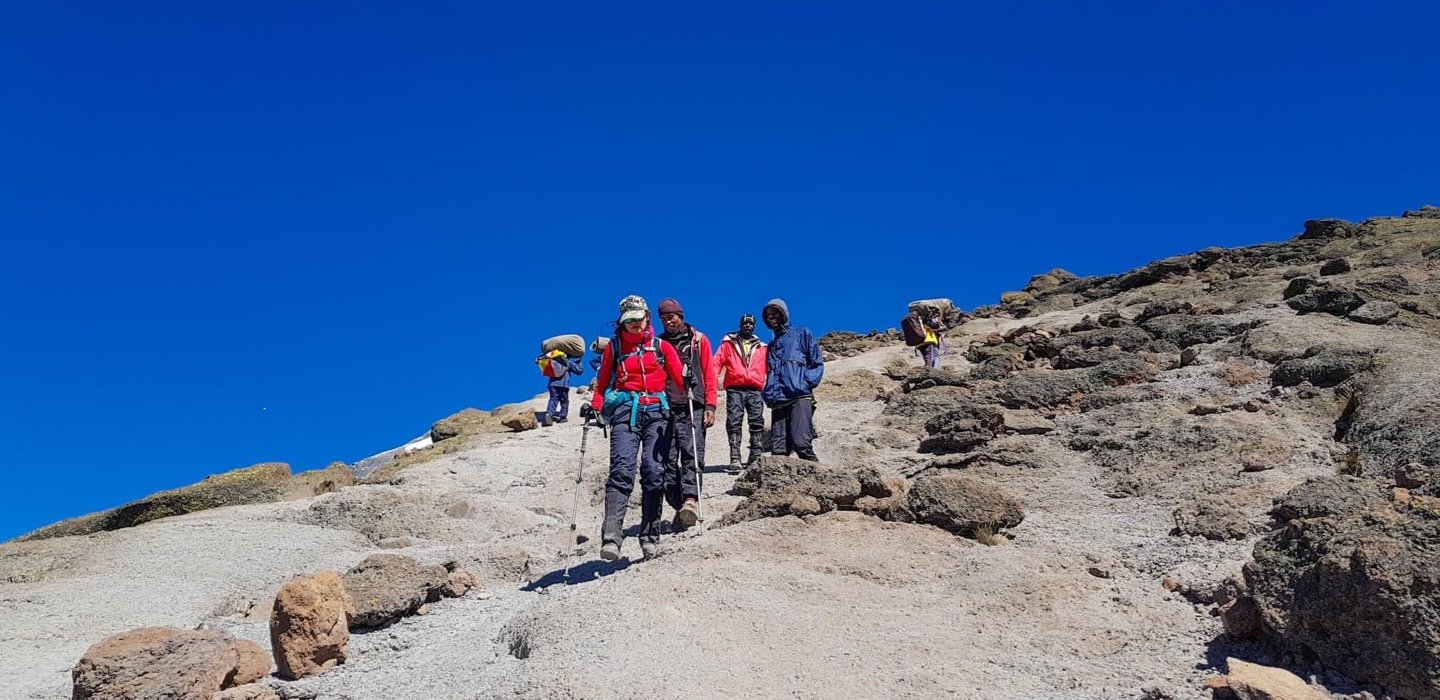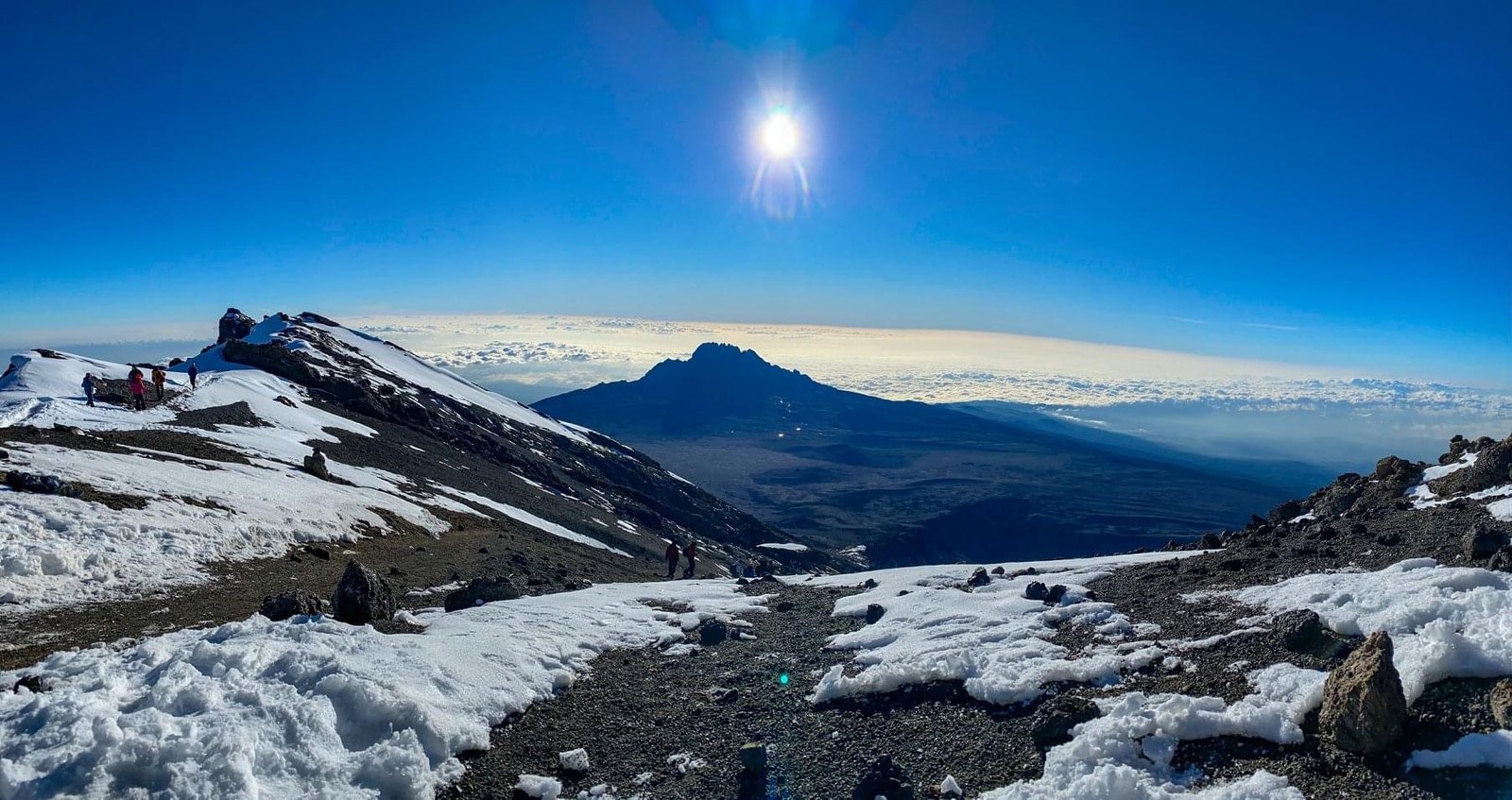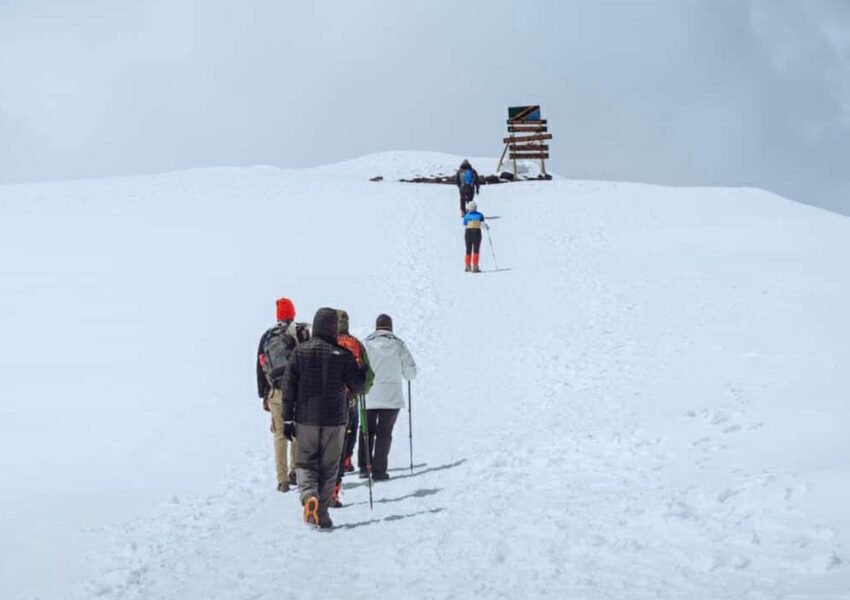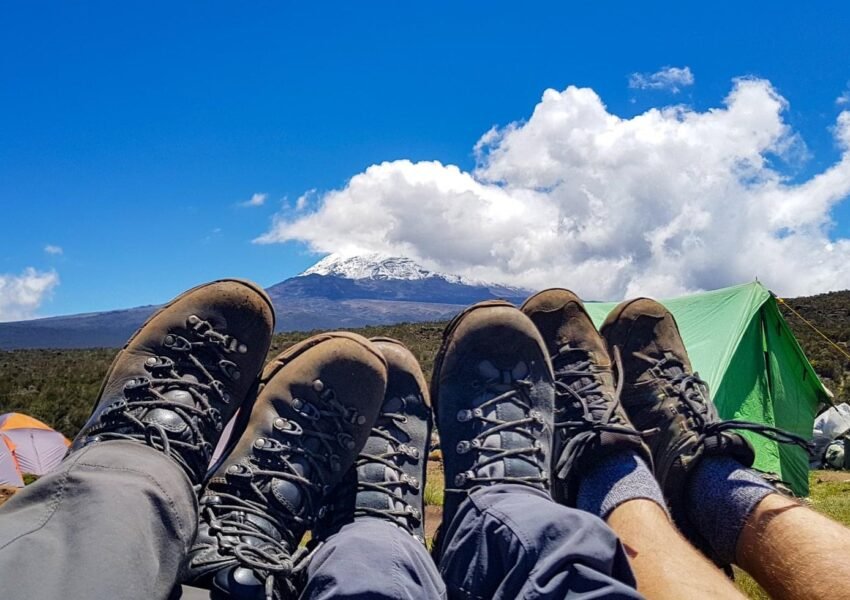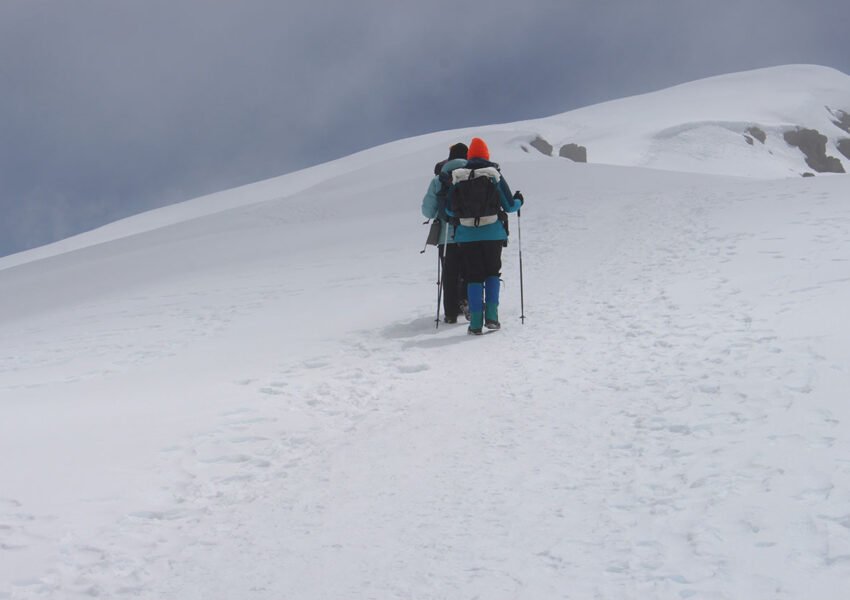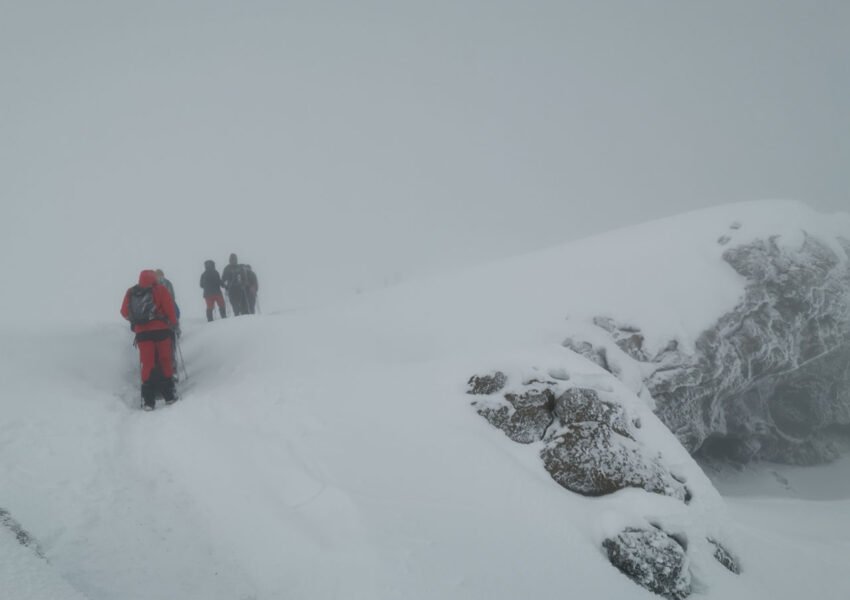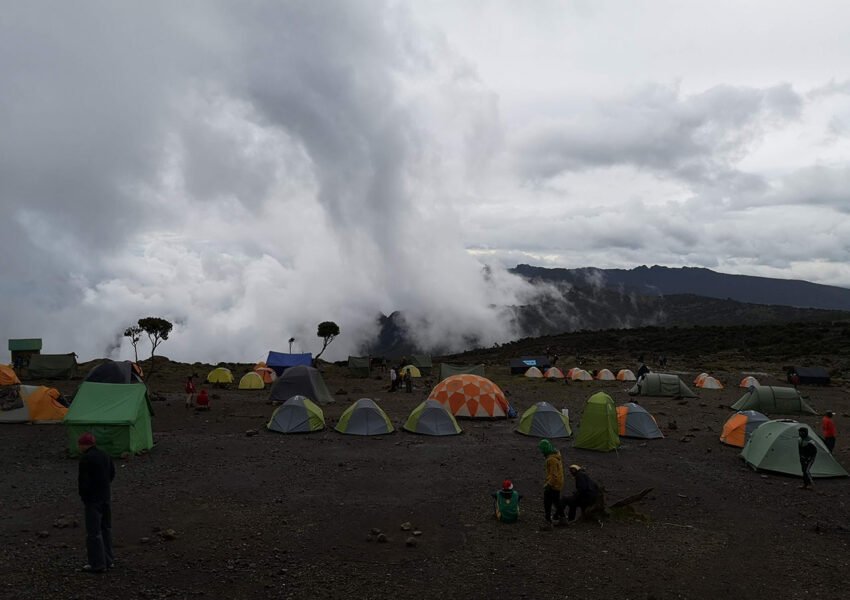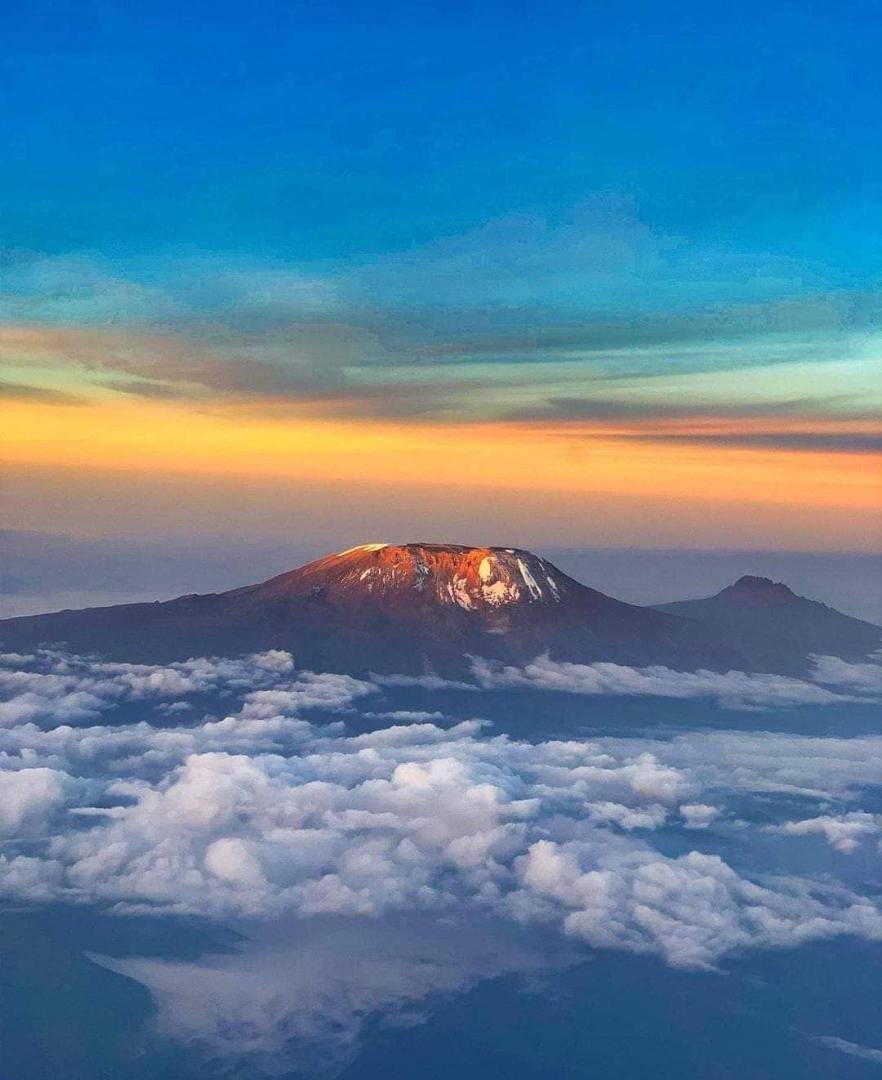Uhuru Peak is the highest point on Mount Kilimanjaro at an altitude of 5,895m (19,340 ft) above sea level.…
Kilimanjaro Rongai Route (7 days)
- Camping (Tents)
- June to October, January to March
- Guides
- 5,895 meters (19,341 feet)
- Breakfast , Lunch & Dinner
- 10
Trip Overview
Overview
Embark on an unforgettable journey to the summit of Mount Kilimanjaro, Africa’s highest peak, via the scenic and less-traveled Rongai Route. Known for its pristine wilderness, diverse landscapes, and gradual ascent, the Rongai Route offers a unique and tranquil trekking experience. Over seven days, you’ll traverse lush rainforests, alpine meadows, and lunar-like landscapes, culminating in a breathtaking sunrise at Uhuru Peak (5,895 meters). This adventure is perfect for those seeking a quieter, more remote path to the summit while enjoying the camaraderie of experienced guides and porters.
Trip Highlights
Trip Highlights
- Scenic Trails: Experience diverse landscapes, from lush rainforests to barren alpine deserts and icy glaciers.
- Wildlife Encounters: Spot unique animals like colobus monkeys and exotic birds during your ascent.
- Cultural Experience: Interact with local guides and porters, learning about their culture and traditions.
- Summit Adventure: Reach Uhuru Peak (5,895m), the highest point in Africa, for a breathtaking sunrise and stunning views
- Personal Triumph: Overcome physical and mental challenges, creating a sense of accomplishment and unforgettable memories.
Trip Itinerary
- Activities: Arrival, briefing, and preparation.
- Elevation: Moshi (890m / 2,920ft).
- Overview:
- Your adventure begins in Moshi, a vibrant town at the foot of Kilimanjaro. After arriving, you’ll meet your guide for a thorough briefing about the trek.
- What to Wear: Comfortable casual clothes for the evening. Have your trekking gear ready for the next day.
- Food: Enjoy a hearty dinner at the hotel to fuel up for the journey ahead.
- Flora and Fauna: Moshi’s tropical climate is home to lush greenery and colorful birds, offering a glimpse of the rainforest you’ll explore tomorrow.
- Trekking Distance: 8km / 5 miles.
- Elevation Gain: Rongai Gate (1,950m / 6,398ft) to Simba Camp (2,650m / 8,694ft).
- Hiking Time: 3–4 hours.
- Habitat: Rainforest and moorland.
- Highlights:
- The trek begins at Rongai Gate, where you’ll enter the lush rainforest. This vibrant ecosystem is alive with the sounds of birds and rustling leaves.
- What to Wear: Lightweight, moisture-wicking clothing and a rain jacket. The forest can be damp and humid.
- Food: Lunch is served on the trail, with a warm dinner at camp. Meals are designed to keep your energy levels high.
- Acclimatization Tips: Walk at a steady pace and drink plenty of water to help your body adjust.
- Flora and Fauna: Look out for colobus monkeys, blue monkeys, and vibrant bird species like turacos. The forest is dense with ferns, mosses, and ancient trees.
- Trekking Distance: 6km / 3.7 miles.
- Elevation Gain: Simba Camp (2,650m / 8,694ft) to Second Cave Camp (3,450m / 11,319ft).
- Hiking Time: 3–4 hours.
- Habitat: Moorland.
- Insights:
- Today’s trek takes you through the moorland, where the landscape opens up, offering stunning views of Kibo Peak.
- What to Wear: Layer up with a thermal base layer, a fleece, and a windproof jacket. The moorland can be chilly and windy.
- Food: Enjoy warm meals prepared by your cook, including soups, pasta, and fresh fruit.
- Acclimatization Tips: Practice deep breathing and maintain a steady pace to help your body adapt.
- Flora and Fauna: Spot giant groundsels and lobelias, unique plants that thrive in this zone. You might also see antelopes or eagles soaring above.
- Trekking Distance: 9km / 5.6 miles.
- Elevation Gain: Second Cave Camp (3,450m / 11,319ft) to Kikelewa Camp (3,600m / 11,811ft).
- Hiking Time: 5–6 hours.
- Habitat: Moorland and alpine desert.
- Overview:
- The trail continues through rocky terrain and alpine meadows, with breathtaking views of the Kenyan plains.
- What to Wear: Warm layers are essential, as temperatures drop significantly at night. Don’t forget a hat and gloves.
- Food: Meals are designed to provide energy and warmth, with plenty of carbohydrates and protein.
- Acclimatization Tips: Drink at least 3–4 liters of water daily and avoid overexertion.
- Flora and Fauna: The landscape becomes more barren, but you might spot hardy plants like everlastings and occasional wildlife like ravens.
- Trekking Distance: 6km / 3.7 miles.
- Elevation Gain: Kikelewa Camp (3,600m / 11,811ft) to Mawenzi Tarn Camp (4,330m / 14,206ft).
- Hiking Time: 4–5 hours.
- Habitat: Alpine desert.
- Highlights:
- Trek to Mawenzi Tarn Camp, a stunning location at the base of Mawenzi Peak. The glacial tarn (lake) adds to the dramatic scenery.
- What to Wear: Dress in warm, layered clothing, as temperatures can drop below freezing at night.
- Food: High-energy meals like porridge, stews, and energy bars keep you fueled.
- Acclimatization Tips: Take short, slow steps and rest frequently to avoid altitude sickness.
- Flora and Fauna: The alpine desert is sparse, but you might see lichens and hardy grasses clinging to the rocks.
- Trekking Distance: 9km / 5.6 miles.
- Elevation Gain: Mawenzi Tarn Camp (4,330m / 14,206ft) to Kibo Hut (4,700m / 15,420ft).
- Hiking Time: 5–6 hours.
- Habitat: Alpine desert.
- Insights:
- Cross the Saddle Plateau, a vast, otherworldly landscape between Mawenzi and Kibo.
- What to Wear: Wear warm, windproof clothing, as the plateau can be extremely cold and windy.
- Food: Eat a high-carb dinner to prepare for the summit attempt.
- Acclimatization Tips: Rest as much as possible and stay hydrated.
- Flora and Fauna: The landscape is barren, with only a few hardy plants and occasional birds.
- Trekking Distance: 20km / 12.4 miles (round trip).
- Elevation Gain: Kibo Hut (4,700m / 15,420ft) to Uhuru Peak (5,895m / 19,341ft).
- Elevation Loss: Uhuru Peak to Horombo Hut (3,720m / 12,205ft).
- Hiking Time: 12–14 hours.
- Habitat: Arctic zone and alpine desert.
- Overview:
- Begin your summit attempt at midnight, trekking under the stars. The final push to Uhuru Peak is challenging but rewarding.
- What to Wear: Layer up with thermal base layers, a down jacket, and a windproof shell. Don’t forget a warm hat, gloves, and sunglasses.
- Food: Have a light snack before the climb and enjoy a celebratory meal after descending.
- Acclimatization Tips: Move slowly and take breaks to catch your breath.
- Flora and Fauna: The arctic zone is devoid of vegetation, but the views of the glaciers and crater are unforgettable.
- Trekking Distance: 20km / 12.4 miles.
- Elevation Loss: Horombo Hut (3,720m / 12,205ft) to Marangu Gate (1,860m / 6,102ft).
- Hiking Time: 6–7 hours.
- Habitat: Moorland and rainforest.
- Highlights:
- Descend through the rainforest, enjoying the lush scenery and warmer temperatures.
- What to Wear: Lightweight, comfortable clothing for the descent.
- Food: Celebrate with a final meal at the gate before returning to Moshi.
- Flora and Fauna: Re-enter the rainforest, where you might spot monkeys and colorful birds
Trip Includes
- Park Fees:
- Kilimanjaro National Park entry fees.
- Camping or hut fees (depending on the route).
- Rescue fees (mandatory for all climbers).
- Accommodation:
- Tents for camping (if applicable).
- Sleeping mats.
- Meals:
- Three meals per day (breakfast, lunch, and dinner).
- Hot drinks (tea, coffee, etc.).
- Snacks during the trek.
- Guides and Porters:
- Professional, certified mountain guides.
- Porters to carry equipment and supplies.
- Salaries for the crew (guides, porters, and cooks).
- Transportation:
- Transfers to and from the trailhead (usually from Moshi or Arusha).
- Equipment:
- Group equipment (e.g., dining tent, cooking equipment, etc.).
- Safety:
- Oxygen cylinders for emergency use.
- First aid kits and basic medical supplies.
- Pre-Trek Briefing:
- A detailed briefing before the climb to discuss the itinerary, safety, and equipment.
Trip excludes
- International Flights:
- Airfare to and from Tanzania.
- Visa Fees:
- Tanzanian tourist visa (if required).
- Personal Gear:
- Clothing, hiking boots, sleeping bags, and personal items.
- Tips for Guides and Porters:
- Tipping is customary and expected but not included in the package.
- Travel Insurance:
- Medical and evacuation insurance (mandatory for most operators).
- Additional Meals and Drinks:
- Meals not included in the itinerary (e.g., in towns before or after the climb).
- Alcoholic beverages or specialty drinks.
- Optional Extras:
- Additional nights of accommodation before or after the climb.
- Optional activities (e.g., safari tours, cultural visits).
- Personal Expenses:
- Souvenirs, laundry, phone calls, etc.
- Emergency Evacuation:
- Costs for emergency evacuation or medical treatment beyond basic first aid.
Official Trek Map

Frequently Asked Questions (FAQs)
Frequently Asked Questions (FAQs)
The Rongai Route is one of the less crowded paths to the summit of Mount Kilimanjaro. It approaches the mountain from the north, near the Kenyan border, and is known for its scenic beauty, gradual ascent, and wilderness experience.
The Rongai Route typically takes 6-7 days to complete. A 7-day itinerary is recommended for better acclimatization and a higher chance of reaching the summit.
The Rongai Route is considered one of the easier routes on Kilimanjaro due to its gradual slope. However, altitude sickness can still be a challenge, and proper acclimatization is crucial.
The success rate for the Rongai Route is moderate to high, especially on the 7-day itinerary. Proper acclimatization, fitness, and a good guide increase your chances of reaching the summit.
The best times to climb are during the dry seasons:
- January to mid-March: Clear skies and cooler temperatures.
- June to October: Dry and stable weather conditions.
Avoid the rainy seasons (April-May and November) as trails can be slippery and visibility poor.
The Rongai Route offers diverse landscapes, including:
- Dense rainforest at the lower elevations.
- Moorland and alpine desert as you ascend.
- Stunning views of the Kenyan plains to the north.
- The iconic Kibo crater and glaciers near the summit.
No, the Rongai Route is one of the least crowded routes on Kilimanjaro, making it ideal for trekkers seeking a quieter, more remote experience.
The Rongai Route is a camping-only route. You’ll sleep in tents at designated campsites, and porters will set up and dismantle the camps for you.
Yes, climbing Kilimanjaro requires good physical fitness. Regular cardio, strength training, and hiking practice are recommended to prepare for the trek.
Temperatures vary with altitude:
- Lower elevations: Warm during the day, cool at night.
- Summit night: Can drop to -10°C to -20°C (14°F to -4°F).
Proper gear is essential to stay warm.
Yes, beginners can climb the Rongai Route with proper preparation, fitness, and guidance. The gradual ascent makes it a good option for first-time climbers.
Request a route
- Unbeatable Value Assurance - ( Discover extraordinary adventures )
- Effortless Reservation Process - ( No booking hassles )
- Transparent Pricing, Zero Surprises - ( No hidden costs )
- Expertise Beyond Measure - ( Team of seasoned experts )
- Your Joy, Our Priority - ( Happiness Commitment )
Need help with booking? Send Us A Message
Treking Tips
Among the important prerequisites of a successful Kilimanjaro summit attempt is being properly equipped. No shortcuts .make sure…
Each climber on Mt. Kilimanjaro is required to pay park fees, for conservation, camping, rescue, and crew fees.[…]
When choosing the most suitable time for climbing Mount Kilimanjaro, you should consider several factors: the temperature, the…
You should ensure that you have good insurance to cover these risks. It is a condition of booking…

